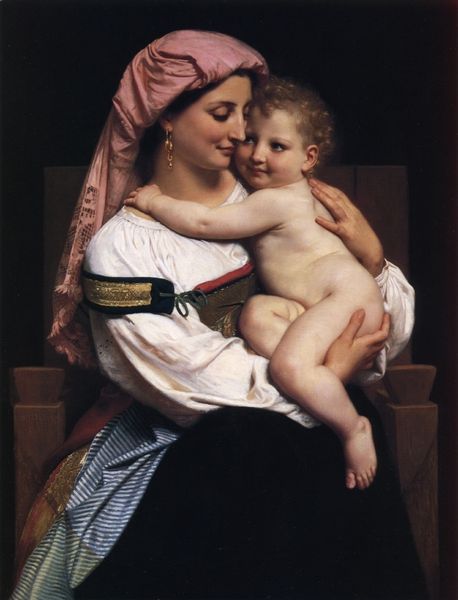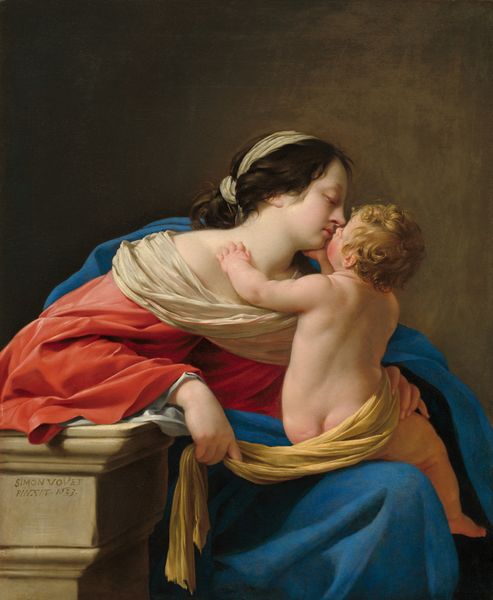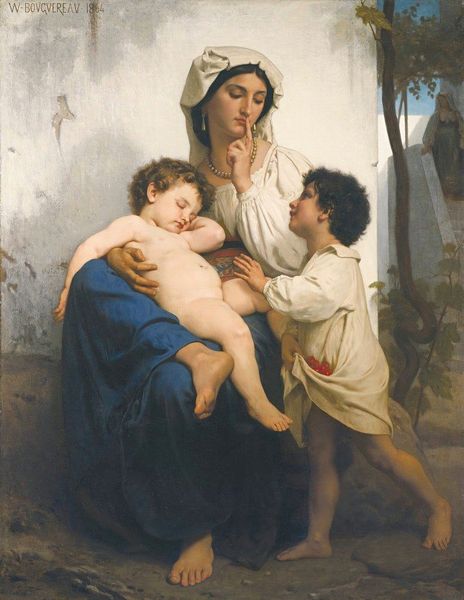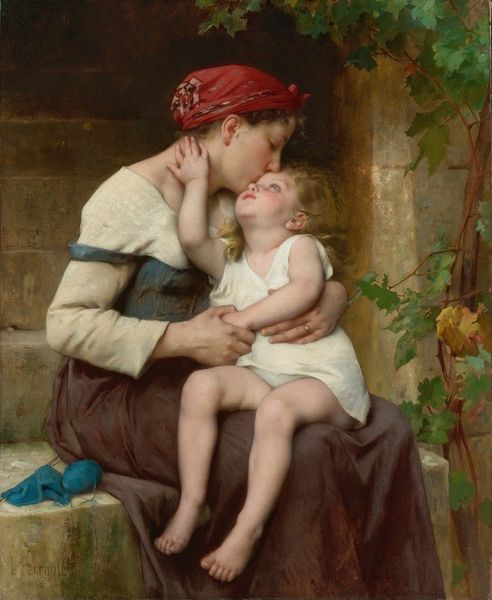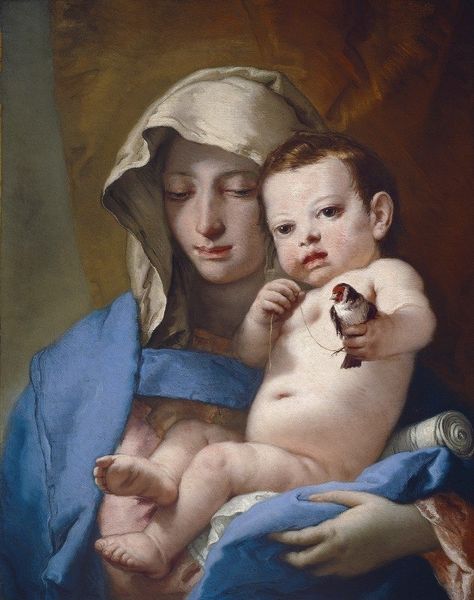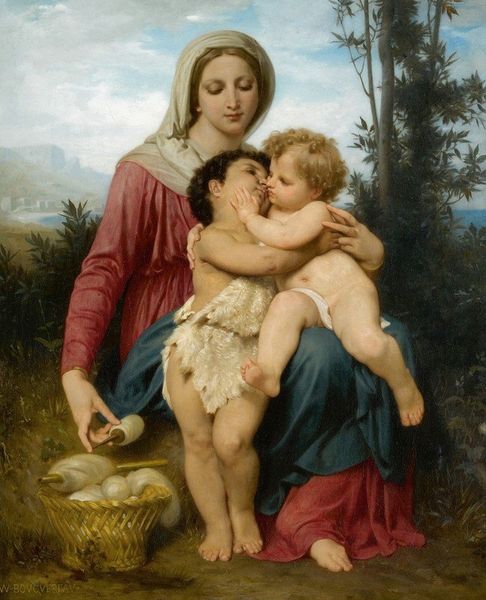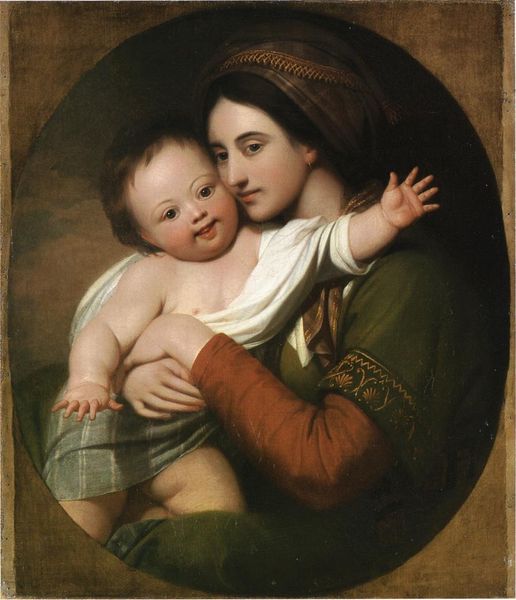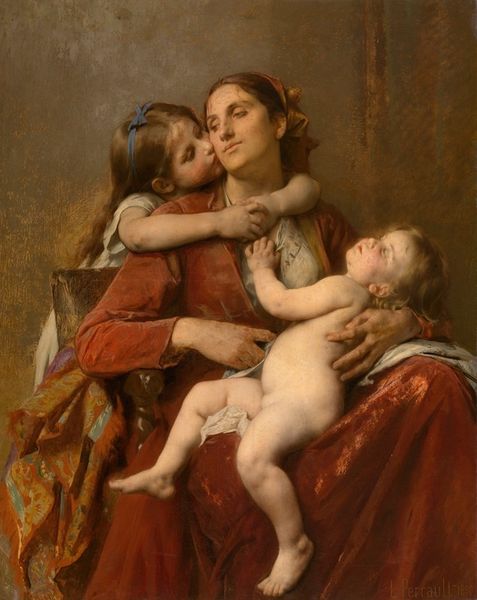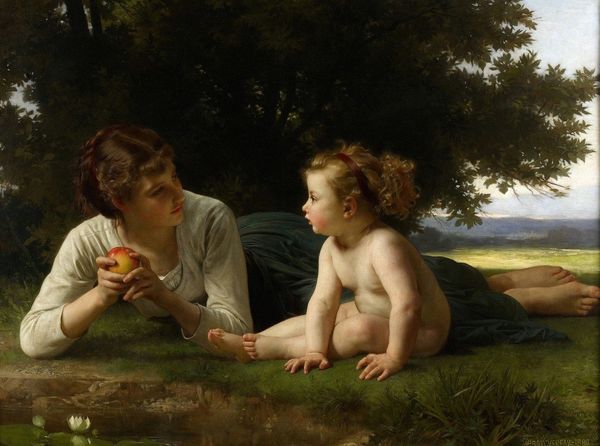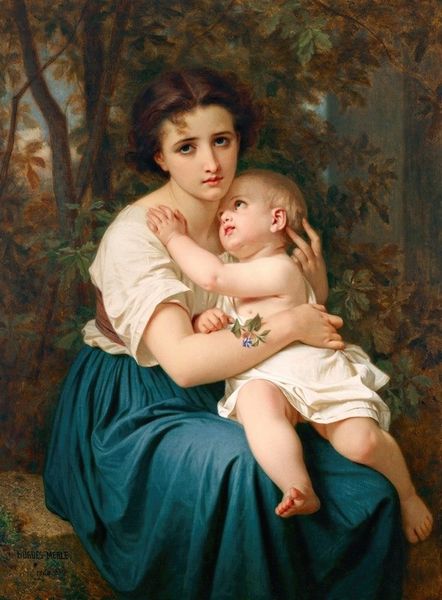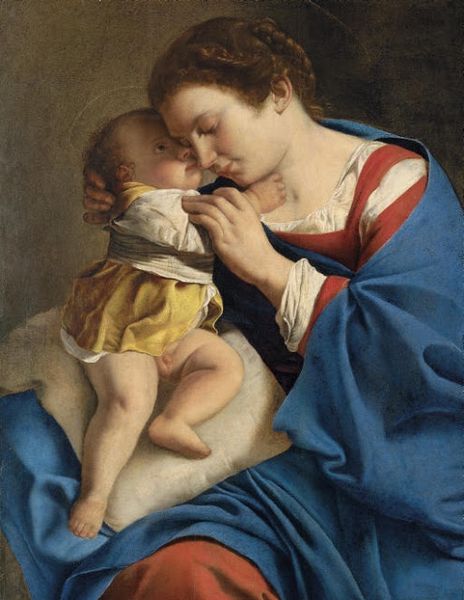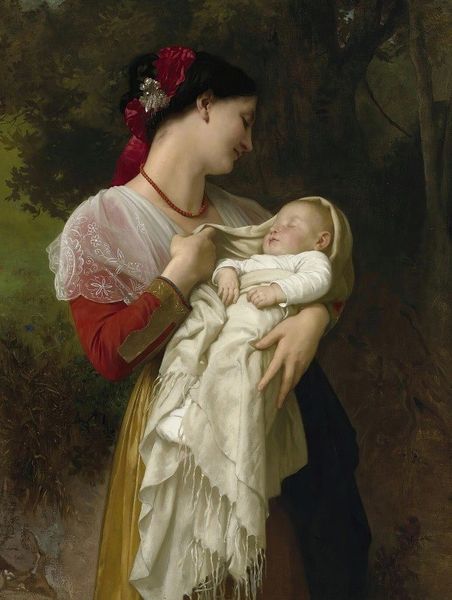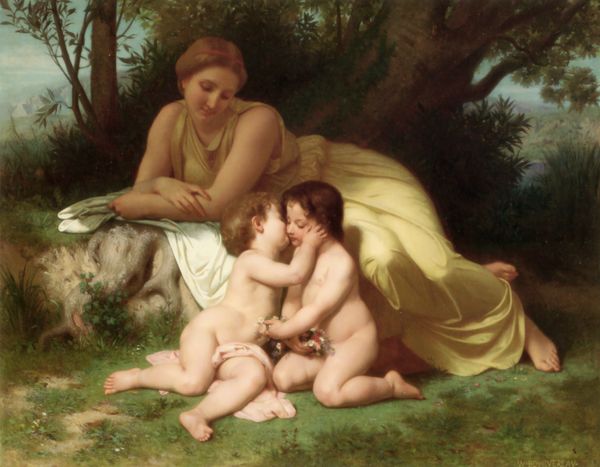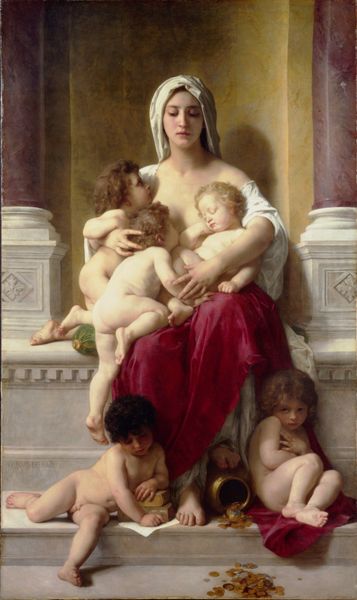
painting, oil-paint
#
portrait
#
mother
#
painting
#
oil-paint
#
figuration
#
child
#
costume
#
genre-painting
#
academic-art
Dimensions: 86.4 x 113.7 cm
Copyright: Public domain
Editor: Here we have William Bouguereau's "The Kiss," painted in 1863, using oil paint. The rendering of the mother and child seems overly sentimental to my eye. How do you interpret this work? Curator: It's tempting to dismiss Bouguereau as simply sentimental, but that risks overlooking the painting's complicated engagement with constructions of ideal motherhood in 19th-century France. Bouguereau wasn't just depicting a sweet scene. He was participating in a larger discourse. Think about the role of women at that time; how did this idealization impact real women's lives and opportunities? Editor: So, it’s less about the genuine emotion, and more about… societal expectation? What about the child, holding an orange? Does that carry any specific weight in understanding Bouguereau’s commentary? Curator: Exactly. And yes, the orange held by the child could represent fertility and abundance, which ties directly into the expectations placed on women to produce heirs. It is as though it embodies this idea that motherhood is not merely a personal choice, but a civic duty and a function imposed by gender dynamics. How might that impact the narrative we’re seeing? Editor: It completely reframes it. Instead of pure tenderness, it becomes almost…loaded. I hadn't considered the implications beyond the surface. Curator: These visual choices were deliberate, contributing to the wider dialogue about femininity, family and class within that historical moment. Reflecting on this should encourage critical questioning and open up pathways of engagement beyond the confines of that period. Editor: Thank you. It is certainly something to ponder, thinking how even the most conventional art still echoes with the political nuances of its time. Curator: Absolutely. Examining these works helps us recognize how art and social forces perpetually shape one another.
Comments
No comments
Be the first to comment and join the conversation on the ultimate creative platform.
